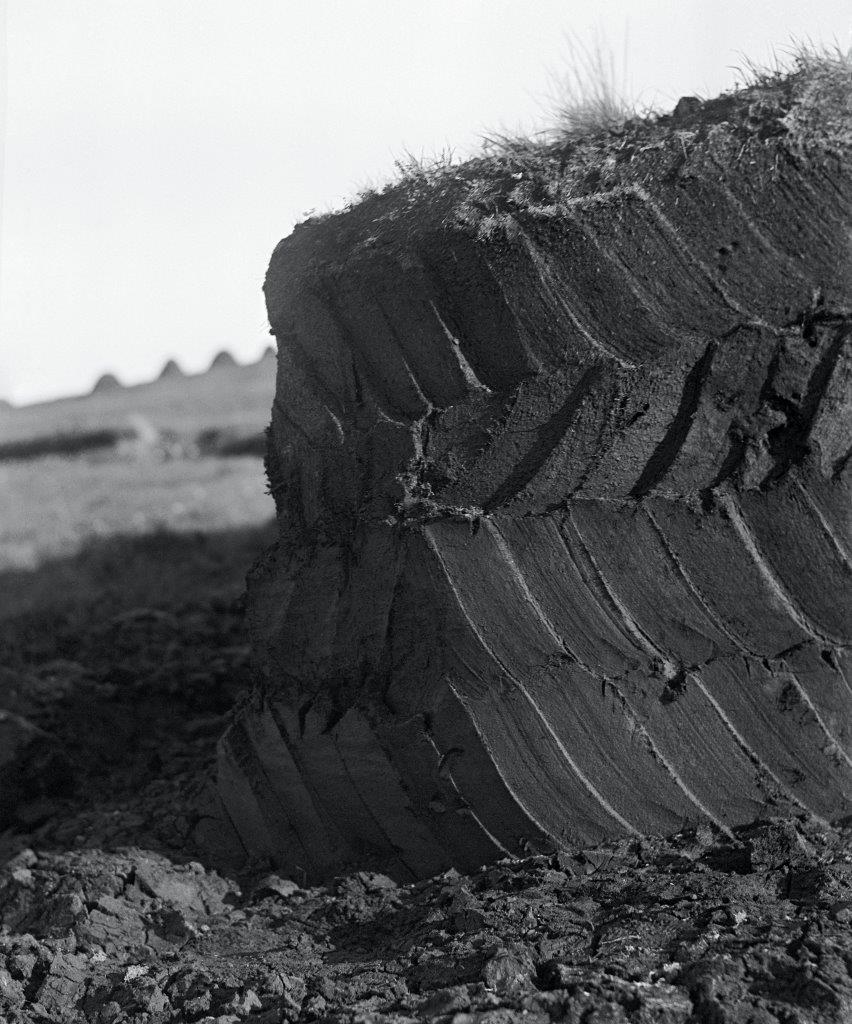The Minaun Cliffs, with a 1500-foot elevation, tower over the beaches by the village of Keel on Achill. This image is taken from the base of Slievemore Mountain looking south to Minaun. Clare Island rests beyond. The haycock in the forefront of this photograph is secured with hay ropes and anchored with stones. It illustrates the next-to-last step in the haying process that usually occurs in June or early July. In the 1930s, hay was still cut with a scythe and left on the ground to dry. After a few days, the farmers turned the hay with a pitchfork and later raked it into small stacks called haycocks. They then combined the rounded stacks into a larger haycock that was sometimes covered in cloth to protect it from the weather. Later in the summer, the farmers used pulleys and ropes to shift the enormous haycocks onto a wheeled wooden platform or “haycock shifter.” A horse would pull the haycock shifter to the farmyard.
|


